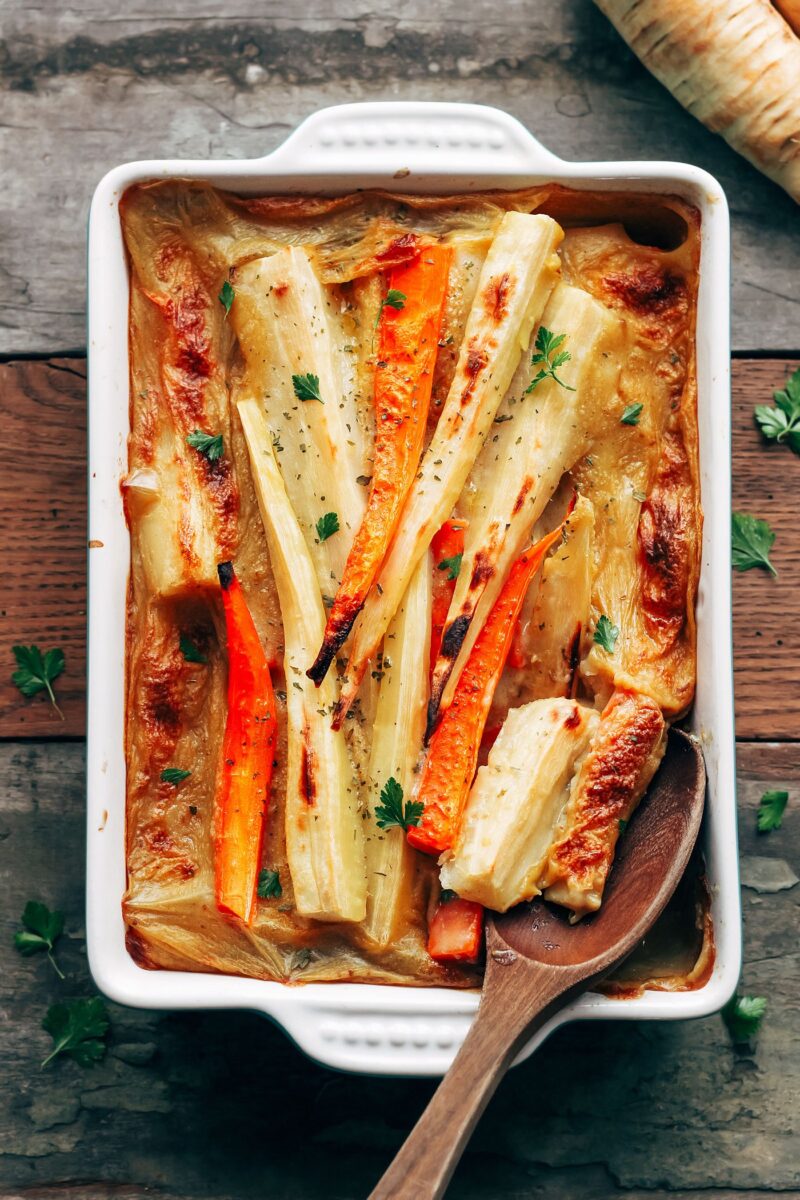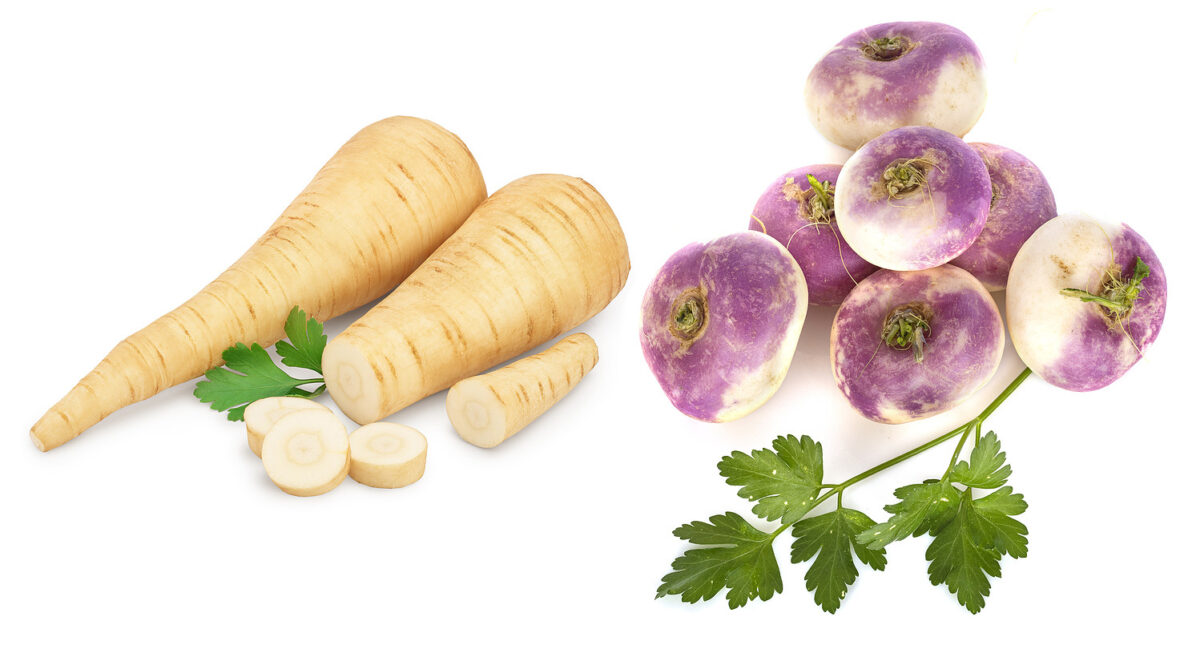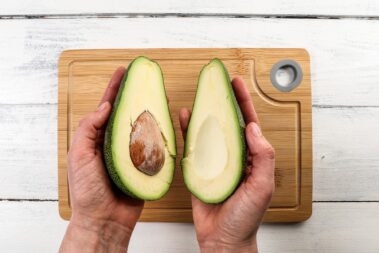If you’re not a professional chef or gardener, odds are you probably struggle to keep parsnips vs turnips straight in your head. It’s understandable. They’re both pale root vegetables that aren’t exactly common in most modern cooking.
But that doesn’t mean these two vegetables are interchangeable.
So, before you make a colossal cooking mistake by swapping the sweet parsnip with the bitter turnip, keep reading to learn all the differences between these distant cousins and how each is used in the culinary world.
Table of Contents
The Details: Plant Type and Origin

Parsnip
The parsnip is part of the Apiaceae family and is a close cousin to carrots and parsley. Like carrots, the plant forms a thick taproot that is harvested in the fall or spring. But unlike the flashy carrot, which can come in a variety of colors from orange to yellow to red, the humble parsnip is resigned to a pale shade of white to slightly golden brown.
The plant is native to Eurasia and was a favorite of the Greeks and Romans (who thought it was just another variety of carrot). It was also used as an early sweetener before sugarcane came into the picture.

Turnip
Turnips are part of the Brassicaceae family which includes the very similar rutabaga, as well as mustard greens and cabbage. Like the parsnip, this plant also forms a thick taproot, but instead of an elongated form, this one takes on a rounded look, similar to a radish. Also like the parsnip, turnips are mostly white in color, though many varieties have a purplish-pink crown.
Turnips are native to Northern Europe but have been cultivated far and wide. The greens of the plant are also often eaten. Both are harvested during the cool weather before the heat turns the root woody and unusable.
Nutritional Profile
Parsnip
The sweet parsnip is a little more calorie-heavy than other veggies thanks to plenty of carbohydrates, but those extra carbs come with plenty of nutrients. In addition to dietary fiber, this veggie is packed with folate, vitamin K, and vitamin C.
These important antioxidants aid in immune function, weight loss, and overall health. Plus, all that soluble and insoluble fiber is great for improving digestion.
Turnip
Turnips have about ⅓ the calories of parsnips, cup for cup, and have even more vitamin C. While they don’t pack quite the fiber or antioxidant load of their elongated cousin, they do have plenty of glucosinolates, which act to reduce oxidative stress and may even fight cancer.
These round roots may also have antidiabetic benefits and have been found to reduce blood sugar levels and improve insulin production in type 2 patients. They also may help lower blood pressure by removing salt from the body and dilating blood vessels.
Turnips are also loaded with minerals, including manganese, magnesium, copper, calcium, and potassium.
When it comes to parsnips vs turnips, both have a lot to offer in terms of nutrition.
Culinary Uses
Parsnip
While both parsnips and carrots have an oddly sweet taste to them, the parsnip has a touch of spice with its candy-like sweetness (think allspice or nutmeg). They’re good roasted, sauteed, or boiled and can even be blended to add some creaminess to baked goods.
One simple way to enjoy parsnips is to roast them with olive oil, herbs, and a little salt and pepper. This makes a wonderful side dish or healthy snack.
Parsnips are tender and less crunchy than turnips when raw.
Unlike carrots, most of the flavor of a young, small parsnip is in the skin, so avoid peeling these veggies before use.
Turnip
Turnips taste similar to cabbage with some spicy undertones like a radish but not as intense. They can be slightly bitter or sweet depending on the variety. The texture is crisp and firm.
In the culinary world, the turnip is often used in the same way as potatoes. They can be boiled and mashed, baked, steamed, or added to stews. Because of their cabbage-like flavor, they can even be shredded and used in coleslaw or salads.
One of my favorite ways to enjoy turnips is to boil and mash them with some butter. This makes a wonderful side along with steamed broccoli and a hearty protein like lentils or crispy tofu.
The greens are excellent sauteed with some onions and garlic, but can also be enjoyed steamed or added to soups.
Our Favorite Parsnip and Turnip Recipes
No matter which side you choose when it comes to parsnip vs turnip, there’s no shortage of excellent recipes out there to get you more familiar with these lesser-used root veggies.
Here are a few of our favorites:

- Easy Parsnip and Carrot Bake – This savory dish is bursting with flavor and rich enough to satisfy those comfort food cravings without sacrificing nutrition. And, because it’s super easy to make, it’s the perfect dish for weeknights and busy weekends.
- Vegan Parsnip Chowder – This chowder is heavy on the root veggies and absolutely delicious. It requires a long list of ingredients and a good amount of prep but is well worth it for a hearty vegan meal that’s sure to leave you satisfied.
- Turnips and Greens with Cashew Cream Sauce – This creamy dish is packed with nutrition and surprisingly low in carbs. And, it can easily be made vegan by skipping the grated cheese topping.
- Roasted Turnips with Garlic – If you like oven-roasted red potatoes, you are going to love this simple dish. These turnips have a similar, satisfying taste, but without all the unnecessary starch.
- How to Pick the Perfect Watermelon For a Sweet Summer Treat - April 10, 2024
- Future Kind’s Foundations: A Multivitamin Made for Vegans - December 5, 2023
- Does Nutritional Yeast Go Bad? - November 28, 2023








